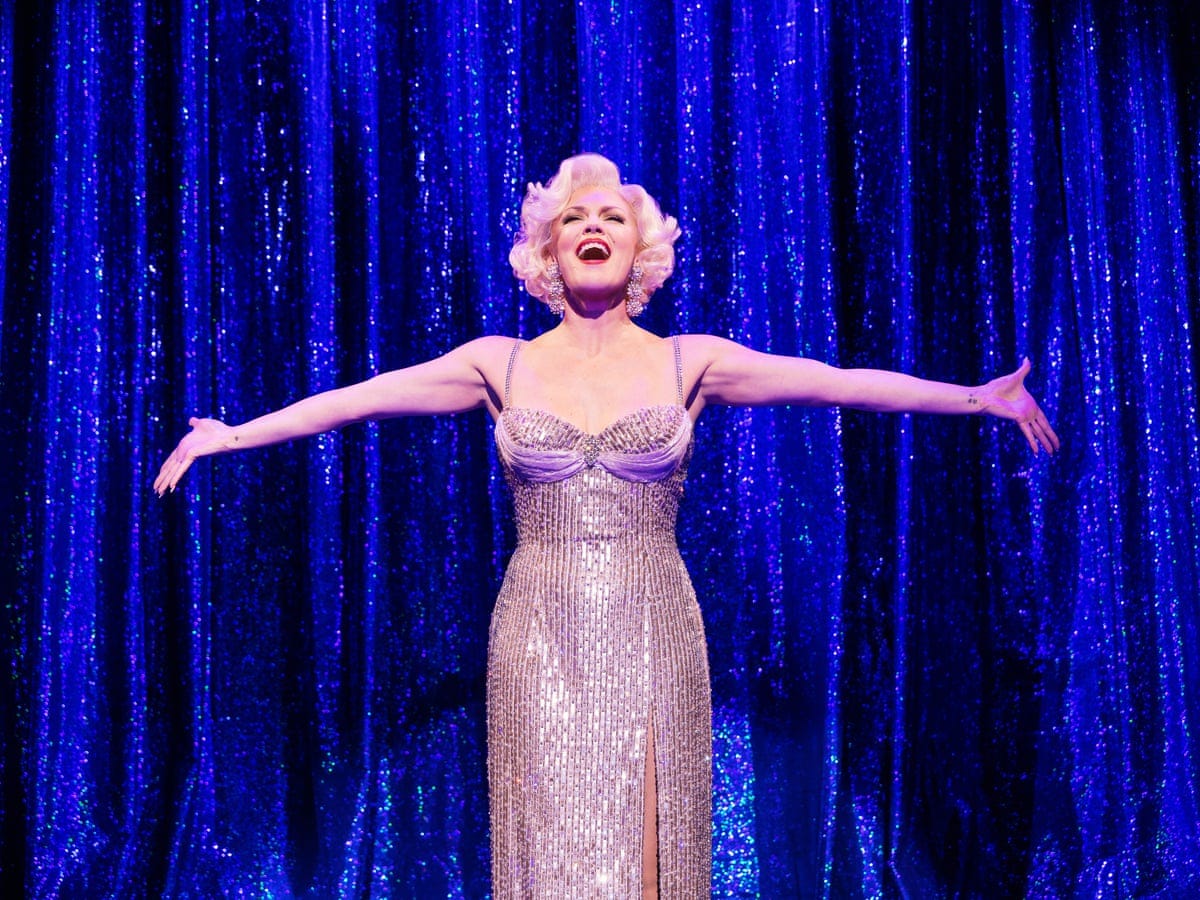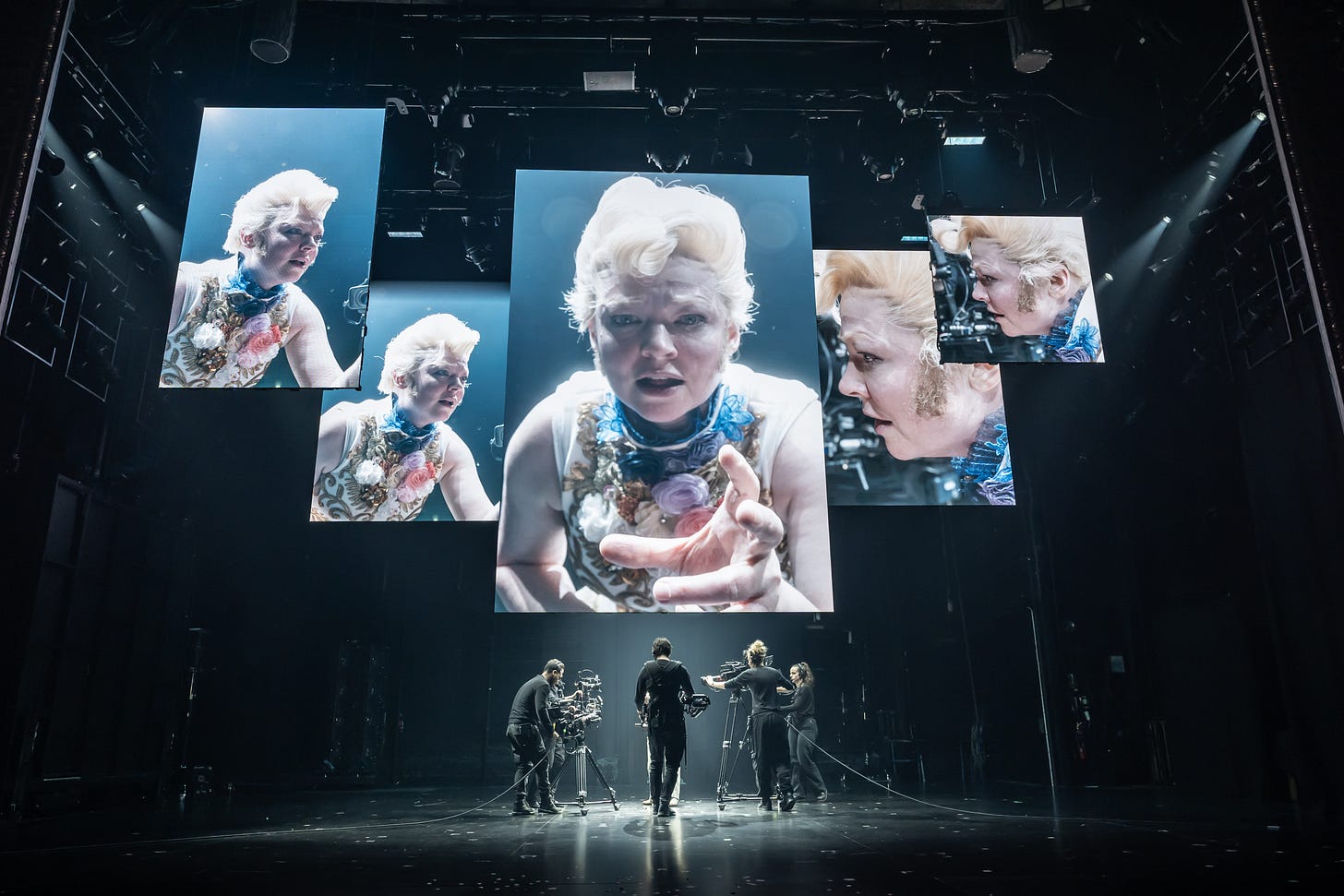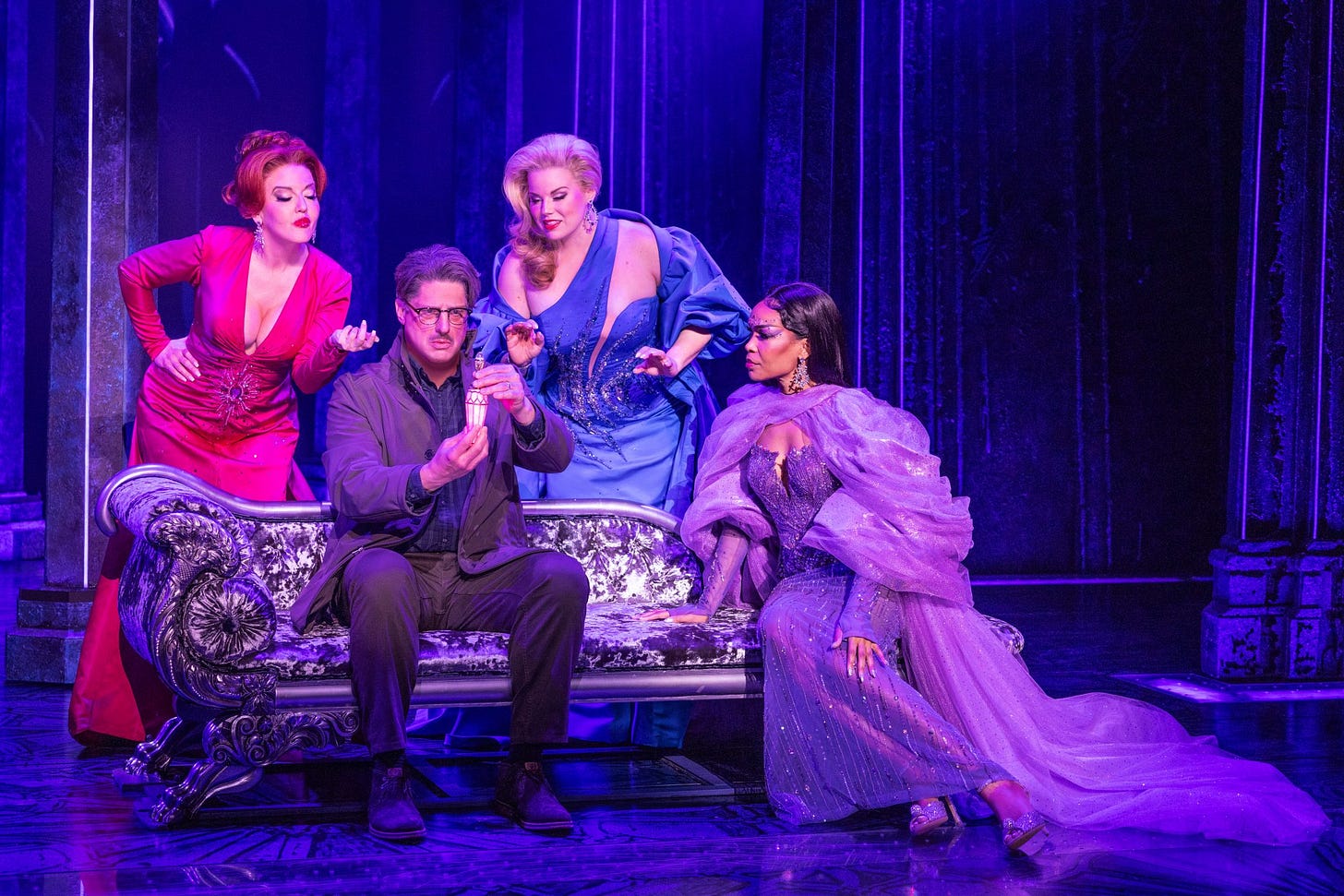Welcome back! Today we’re talking about body image, horror, and what happens when pretty privilege goes to your head.
There are many terrible repercussions from the current political climate, but one of the more subtle ones is the rise of body shaming and hyper-specific beauty standards. I call it subtle not because it necessarily actually is – 1 out of like every 6 videos I see on Tiktok is about makeup or clothes or working out with the goal to get prettier, get thinner – but because I didn’t expect it to invade how I think about myself. And yet it has. I spent most of my life semi-neutral about how I looked, insecure about a few things, but nothing too crazy. Now I’m insecure about way more parts of myself than I’d like (wow vulnerable). It’s unpleasant, and hard to shake.
As a little girl, it was more simple. I was just jealous of my friends who were blondes. I didn’t mind having brown hair, and I liked and latched onto characters like Belle, Dorothy, and Mia Thermapolis, but there was something about long blonde hair that I coveted. It was princess-y, it was cool, and it would never be me.
This season, there’s 3 Broadway shows with iconic blondes in them, for better or for worse. All are adaptations of the existing blonde canon, and all 3 blondes are kind of… evil. Let’s dive in.
Evil in the Age of Snapchat: The Picture of Dorian Gray
Let’s start with the good. By ‘the good,’ I mean the best show of the bunch, and I also mean the most chaotic, most evil blonde. Based on the 1890 Oscar Wilde novel of the same name, The Picture of Dorian Gray is the peculiar and increasingly horrifying story of a young man whose vanity drives him to destruction. Dorian, a young and beautiful, blue eyed and blonde haired aristocrat, is the muse of a rather dopey artist, and is in the studio one day when he finds himself swept away by the hedonistic views of one Lord Henry Wotton. Caught up by the artist’s adoration, Lord Henry’s big ideas and perhaps his own puppy love for Lord Henry, Dorian makes a wish that his painting age, while he remain the same darling, golden-locked boy forever. The fountain of youth cascades down upon him, the wish comes true, and Dorian dedicates himself to pleasure. With each selfish or violent or cruel act the painting becomes more marred, more warped, evident of his misdeeds, and Dorian locks it away upstairs.
You may have read Wilde’s gothic novel, you may have watched the Ben Barnes movie, or you may have even seen a different theatrical adaptation. You have never seen Dorian Gray like this. Adapted and directed by Kip Williams, this Dorian Gray features Succession’s Sarah Snook in the title part… and all the other parts too. Much like Jamie Lloyd’s Sunset Boulevard, Williams has employed a small army of cameras (and screens) for Snook to act opposite. And act she does. Snook is phenomenal, pivoting from big eyed and babyish to droll and austere with just the turn of her head. It’s a feat alone that you fully believe Snook’s performance as Dorian as he transitions from sweetheart to seducer to psycho, then add on the fact that she’s also playing 25 other characters? It’s a fabulous feral performance to remember. With my greatest respect to Laura Donnelly’s dual role as Joan and Veronica in The Hills of California, Sarah Snook wins the season1.
Fortunately for Snook’s sake, the cameras and screens onstage also offer the production the chance to use pre-recorded footage. About 20 minutes into the production, a second Sarah Snook enters the play, on the screen, decked out in an elaborate costume. More characters follow (and a regular, rather meta, Sarah Snook as Sarah Snook, performer and narrator). While this doesn’t really mean Snook gets to come up for air, it does save her a number of costume changes. It’s equal parts neat and uncanny to see the live onstage footage of Snook overlaid on the pre-recorded videos of her, and it speaks to Williams’ directing and Snook’s verbal agility that the conversations between the actress and her digital selves are perfectly paced.
Watching the screens play videos of Snook in Victorian garb, I was reminded of newer exhibits in history museums (particularly those I’ve visited in the UK and Canada). In certain museums, there are life sized screens with videos of people in period costume that tell you about the time and place you’re from when you step in front of them. In fact, in one particularly unsettling exhibit I went to in Montreal, the life sized people on the screen were AI, and could respond to you in real time. At these exhibits, and at The Picture of Dorian Gray, I felt myself longing for something real and tangible, to escape the screens. What a relief that nearly halfway through Dorian Gray, the stage hands and camera ops finally began to roll on set pieces.
While the production did give me a bit of screen fatigue, I understood Williams’ vision. He posited his Dorian Gray as a modern day influencer, albeit one clad in costumes that hearken back to the 1800s. Like many social media personalities, Dorian the influencer is naturally beautiful, and has used his looks to build a following. But a natural prettiness isn’t enough; he needs to digitally alter himself. He throws throws Snapchat filter after Snapchat filter onto his face, (the production uses phones in addition to video cameras to capture content,) and the screens flicker between photos of an un-made up Sarah Snook, pores and all, and filtered, distorted versions of her face. It feels a little heavy handed and dated, like yes, this show is written and directed by a millennial man who might not know all the ways blondes on the internet these days are changing their faces. But then again, by the time Dorian starts editing photos of his face live on stage (in a cool, creepy scene), he’s become a bit of a recluse, a creature of the night. Maybe he doesn’t know what’s trendy.
It’s an imperfect concept for an adaptation of a book from 1890, but its technologically very cool, and I love a high-concept adaptation. And really, does it matter what the show looks like when Sarah Snook is giving the athletic, vicious performance of a lifetime? Not if if you ask me. Dorian Gray might be evil, but with Snook at the helm, let him be.
Two Pretty Arch-Nemeses Telling Each Other “Exactlyyy”: Death Becomes Her
Have you ever had a genuine nemesis? Like someone that you really really loathed2. Yeah? Respect. Well, was that nemesis also your longest friend?
That’s the case for Madeline Ashton and Helen Sharp. Mads and Helen were besties once, but much like a Robert Frost poem, their roads have diverged; Madeleine is a glamorous Broadway star, and Helen an unsuccessful, bitterly jealous novelist. Madeleine (Megan Hilty, the original blonde bombshell) has always had everything – the star power, the looks (the hair) – while Helen (Jen Simard, fiery and fabulous) is ordinary. But fame can’t buy everything, and finally Helen has something Madeline doesn’t: love. So Helen does what any self-respecting nemesis-haver would do; she introduces Madeline to Ernest (Christopher Sieber), her sweet plastic surgeon fiancé, and gloats.
Helen’s win is short lived, because Madeleine does what she does best, and seduces her captive audience. “So tell me Ernest, how much have you seen of me, cinematically?” she begins, in the show’s catchiest number. It’s performed so pitch perfectly by Hilty that you nearly forgive the fact that its followed by a hasty and confusing jump to Madeline and Ernest’s wedding. That wedding ends with a literal crash out from Helen (she parachutes in), which in turn, lands her in the psych ward. And with that, Madeleine and Helen’s mutual hatred is cemented forever.
You may be familiar with Death Becomes Her the movie (or that Sabrina Carpenter music video) and be wondering why I haven’t yet brought up the show’s central conceit, its main gag, its magical ~Child of Destiny (sorry). That’s not my fault, it’s the show’s pacing. Death Becomes Her begins with an witchy number by the charismatic Michelle Williams3, but it then spends a 1/3 of the show’s 2.5 hour run time on set up. But rest assured, that finally, by the end of the first act, Mads and Helen have both drank Michelle Willaim’s magical elixir of eternal youth, and are trying their very best to kill each other.
Satisfying as it was to finally make the pivot from White Lotus girls trip to White Lotus poison smoothies, fun as the “death defying” stunts4 were, I can’t say I cared about anything happening onstage in Death Becomes Her. As the women became more campy, murderous, and vapid, I cared about them less. I found myself almost rooting for poor spineless Ernest, and then promptly wondered if that made me a misogynist. It didn’t help that while each song was peppered with a smart lyric or two, they largely didn’t grab me, or distract enough from the flaws of the source material. I was too busy wrinkling my nose as Madeline and Helen begged cosmetic procedures to fully admire Ernest’s 2nd act patter-adjacent song, or take in Hilty and Simard’s belt-y duets.
As a proponent of the ‘Good for Her’ genre, it was jarring to not root for Madeline and Helen, but they were too evil, too self-obsessed. It would have been one thing if the over-stuffed 2.5 hours had given the women a real moment for reflection, a lesson learned, or a Carrie Coon “I love you, my friends” monologue, but that moment never quite came for me. Death Becomes Her isn’t about female friendship, it’s about how jealousy and vanity make vindictive bitches of women.
And that said? Would I recommend seeing it? Sure, if you like humor and camp and evil middle aged divas. It’s not a show for me (in fact, they tell us in an early number that it’s “for the gaze/gays”) but it’s silly, often lyrically smart, and features wonderful costumes. “If you want perfection,” as Williams sings, you may not find it here, but you’ll find a good enough time.

Don’t Let This Be Your Star: Smash
I’m developing a theory. That theory is that a lead critic for a certain newspaper is doing a social experiment on us, his readers. Because while his takes on plays have been consistent with what I expect from him, his recent musical reviews are bizarre. Suffice to say, he raved about Smash. I wouldn’t.
Loosely adapted from the well-loved TV show of the same name, Smash follows the production process of a new musical, Bombshell, about the life of Marilyn Monroe. When the lead, Ivy, formerly well liked, gets a new acting coach who drugs her, gets her to start dressing like Monroe on the reg, and turns her into Marilyzilla (that’s Marylin Godzilla, i.e. another evil blonde), disaster ensues.
It’s an ensemble comedy, checking off all the boxes and all the stereotypes; there’s the star, the flamboyant director, the miserable married writing team, the lady producer, the “too big to be a star so she’s on the creative team” assistant director (note: the actress is midsized. Second note: yes, this is fatphobia as a poorly handled plot point in 2025), and of course, the eager understudy.
Despite all its ducks in a row, and plenty of excellent pre-existing songs to work with, Smash’s book swiftly veers off course. The TV show is remembered as being about pitting two potential stars against each other for the same role, but Smash the musical seems to be about the perils of method acting. Some of the jokes are funny, many are not. As with Death Becomes Her, none of the characters are particularly likable, or easy to root for. You might have sympathy for Ivy and her drug-induced psychosis, for her underused understudy, the overlooked Armenian (lol) assistant director, but you don’t really care. And besides, you hardly spend any time with anyone – Smash is too busy bouncing so-so zingers back and forth between the jaded show-biz folk. Brittani Samuel (my friend!) said it well: Smash offers “obnoxiously one-dimensional [characters] in [an] unsteady and inadequate book.”
Did I like watching it? Kind of, but I was in a charitable mood. I had a margarita from Rosa Mexicano beforehand and a cookie from Schmackarys during5. Without the sugar coma, I would have been annoyed. It hardly matters that the songs are catchy – they’re so diegetic it feels like you’re watching two different shows: one, Bombshell in concert and the other a messy tourist trap. For a show with wonderful performers (Robyn Hurder is a phenomenal dancer, Brooks Ashmanskas is comedy gold), it’s depressing to see them without anything to do. And honestly, maybe that’s the most meta part of it all.
“What’s Your Favorite Season?” “Awards”
Spring means theater awards season, and my favorite holiday, the Tony Awards. So just a few quick things (lol).
My Signature Theatre girls Three Houses, Orlando and Grangeville received 9 Lucille Lortel nominations - woo!
I’m curious about what plays will be finalists for the Pulitzer - I’m hoping Jonah (which I loved), Give Me Carmelita Tropicana! (heard nothing but good things) and my eligible Signature shows make that list.
As for the Tonys, I’ve decided to get into betting. I kid! But I did get to give my expert (LOL. “expert”. I am just a girl, just a fool) nominee predictions for Gold Derby. They’ll likely shift around after I see Dead Outlaw, but you can find my early predictions here.
That’s all! Thanks for reading! Stay tuned for some more theater and perhaps even ~books~ if I remember how to read.
-Emily
Sorry to pit two women against each other (#recessionindicator)
I love to talk big game about having nemeses, but I’ve never actually really had someone I hated like this lol.
I think the character’s name is Viola, but who the hell cares, that’s Beyonce’s friend Michelle
(Performed very obviously by two men in wigs)
Both Rosa Mexicano and Schmackarys are referenced in the show, much to my tipsy delight






Lol ***dorian gray was 1890 not 1980 that was a Emily can't type moment - it has been fixed now.